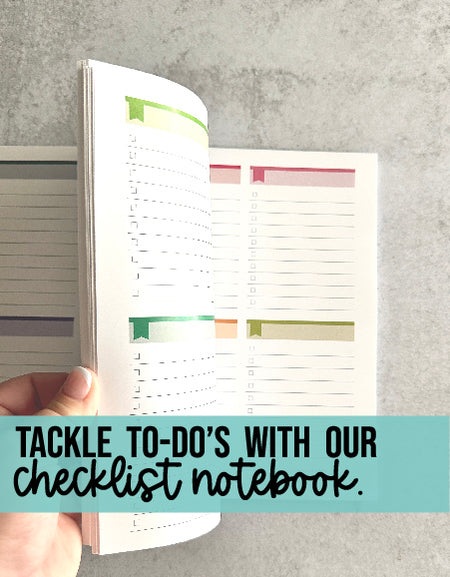A long to-do list can become a daunting undertaking. Factor in a procrastinating nature and that to-do list from Monday remains uncompleted, heading into the weekend. Every day may not go according to plan, but each day can be more productive if you follow these 5 easy steps.
Step 1: Master To-Do List

On Sunday nights write out a list of all the things you need to accomplish in the upcoming week. Think of this as a “brain dump.” Make sure to include upcoming appointments, chores, shopping trips, etc. If certain items are time sensitive, include the time next to the task on this list.
Step 2: Weekly Layout

Next, it’s time to work on the weekly spread in your planner. You can use any planner of your choosing. For each day, make a section labeled To-Do (this can easily be accomplished with the LimeLife Planners’ Layout C). Then, use the master to-do list as a guide when filling in the to-do section for each day.
You can designate certain groupings for specific days if you wish. For example, Monday can be “Household Chores Day,’ which would include things like laundry, vacuuming, mopping, etc. If you don’t want to spend one whole day stuck indoors, you can split a task like laundry into more manageable “mini” tasks and do three small loads throughout the week.
Step 3: The Night Before

Unless you can see into the future, planning a week ahead may not be practical. The night before each day, take a look at your to-do list for the day. Schedule when, during the following day, you would like to do each of the tasks. You can jot down this basic timeline on a sticky-note or check out the FREE section on the Limelife Planners website, where you can download this Hourly Paper Pad file.
Try to use benchmarks, like breakfast, lunch and dinner, when scheduling when you want to do certain chores. Think about what you would like to do before breakfast or after lunch. Include time sensitive tasks like medication, appointments, prayers, etc. accordingly. Don’t forget to carve out some “Me Time!”
Step 4: The Morning Of

Sometimes when you are caught up in a specific task, you forget what time it is. Have you ever forgotten to eat breakfast before heading out or forgotten to start preparing dinner on time?
We are all more or less glued to our phones, so why not use that to our advantage? In the morning, use the timeline from the night before to set little alarms or reminders for yourself. For example, I use the Reminder app that is available on the iPhone. You can download similar apps suitable for your phone from the appropriate stores.
Using the app, set up reminders for tasks that are time sensitive, or are tasks you would like to start at a specific time. Now when you’re engaged in returning emails, a little notification from your phone will remind you, it is time to start preparing dinner.
Step 5: At Night
Before going to bed, take some time to evaluate the day. Were you able to finish everything on that day’s to-do list? If not, you can move it over to the next day. Work it into the plans when you are working on Step 3 that night.
Remember to cut yourself some slack. Things may happen that are out of your control. Structuring your day doesn’t have to mean that you cannot be flexible. If the next day might be unpredictable, build in a few hours where nothing is scheduled, into your timeline. Use those few hours to catch up on urgent matters.
At the end of it all, remember to enjoy the small moments from each day. Just a reminder: The brain tends to remember moments more than a specific day and the details of that day.
This blog post was written by Sadia Chowdhury for the Limelife Planners Media & Creative Team. For more information about Sadia visit her on Instagram @sadia.t.chowdhury. Please share and repost this blog entry with your friends! All we ask is that you give credit to Limelife Planners and the post author.



Comments